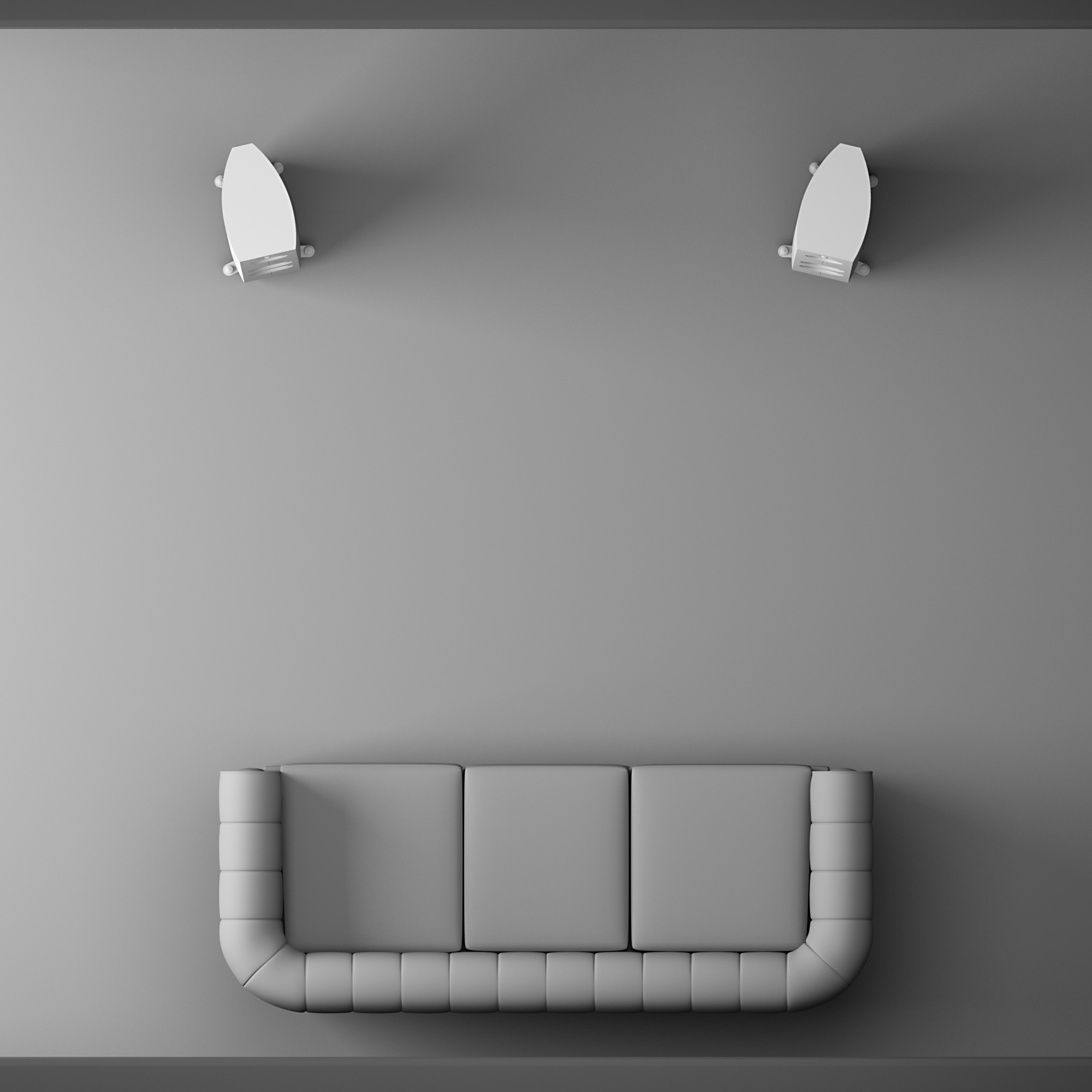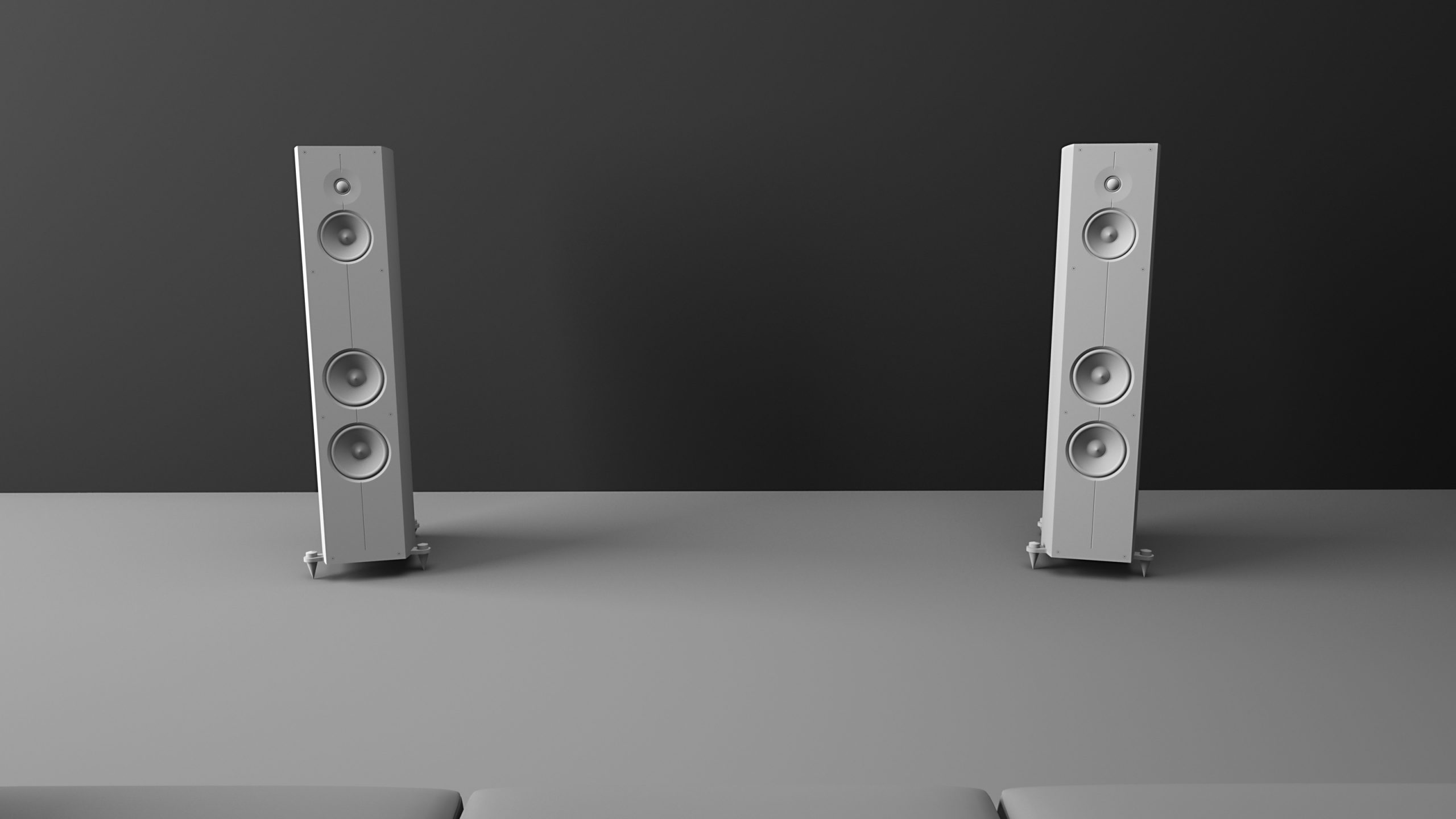Placement
Whilst each room will have its own characteristics a general guide would be to place the loudspeakers at approximately 18 – 24inches from the rear wall and tow them inwards. Ideally they should be 2m, but a minimum of 1m, away from the side wall.
For carpeted floors use the spikes provided. For hard floors use the spikes with the supplied floor protectors underneath, this will stop the spikes from marking the floor. If you do have a hard floor then some absorption local to the speakers (ie a rug) will help to separate the speaker from the room acoustic giving better imaging.
When toeing them inwards you should be able to see some of the inner sides of the cabinet, pointing past you, not directly at you. For optimum listening height you should be sat as the mid-range driver axis, being at tweeter height or standing up is too high and the soundstage won’t sit correctly. If your seated position is next to the back wall there will be more bass, sitting away from the wall will help if it is too much.
Generally the speakers work well at 2 positions. One is the optimum for image depth and sound-staging which is to have the speakers at 1/3rd of the room length and to sit at the other 2/3rds. If this isn’t practical then the second best compromise is to have it 1.5 to 2ft from the back wall. The goal is to have some room loading on the bass but to separate most of the mid-range from the room acoustic. It is a compromise that will work best for most people and the speaker has been designed with that in mind.
Our assumption is that the listeners ears are 90cm from the floor. If you are sitting higher then experiment with more tilt on the speaker, if you are lower then less tilt may work. The spikes allow for a little adjustment.
Your loudspeakers will benefit from a period of ‘running in’. We recommend at least 10 hours at a medium volume.


Unboxing your Corinium Loudspeakers
You should always unpack the loudspeakers on a flat, level surface and allow plenty of room. Ensure the floor surface is clean and free from any objects that may cause the loudspeakers to mark or scratch.
Due to the size and weight of the Corinium loudspeakers it is advised that they should be unpacked and installed by two people. Lay the box flat and using a knife, blade or sharp implement break the tape seal along the top edges of the outer and inner box.
Fold the flaps of the box to the side and remove the spike box any lose packaging. Carefully roll the box over, until the open side is face down, taking care not to let the contents of the box fall out.
Carefully lift the box straight off, and place to one side.
Once it’s out the box, stand the speaker up on its top (so it is upside down) with all the packaging still attached, then the you can remove the base packaging. Attach the bars and spikes using the supplied allen key, take care not to overtighten the bolts, they should be hand tight only. Once the bars and spikes are fitted you can stand the speaker the correct way up then remove the middle packaging and the bag. To reduce the chance of damage remove the grill before attempting to place the speaker in its final position which can either be done by walking the speakers or asking someone to help you lift them, the speaker is too heavy to safely lifted by one person.
Repeat for the second loudspeaker.
Amplification and System Matching
The Corinium has a high sensitivity of 92dB/2.83V with a 4ohm average load. This arrangement offers the maximum headroom from a given amplifier’s voltage output, assuming it has adequate current capability. Amplifier specifications are not usually clear on this issue. Since 1 watt of power will produce 95dB 1m away from the speakers (very loud), amplifier power is required for dynamics rather than for steady state sound level. This means the amplifier must only produce large voltage peaks for a short amount of time and subsequently, very unlikely to produce any thermal limiting under most normal operating conditions. The important measure is the short-term peak current delivery to show that it’s capable of reproducing dynamics without current limitation. The rule of thumb is if the amplifier can double its 8ohm output power into 4 ohms then it should offer sufficient performance. To experience full-scale dynamics and realise the best performance from the speakers, our recommendation is for an amplifier that’s rated at 100W or more into 8 ohms. However, if you only listen at low volumes then less power may well be sufficient.
